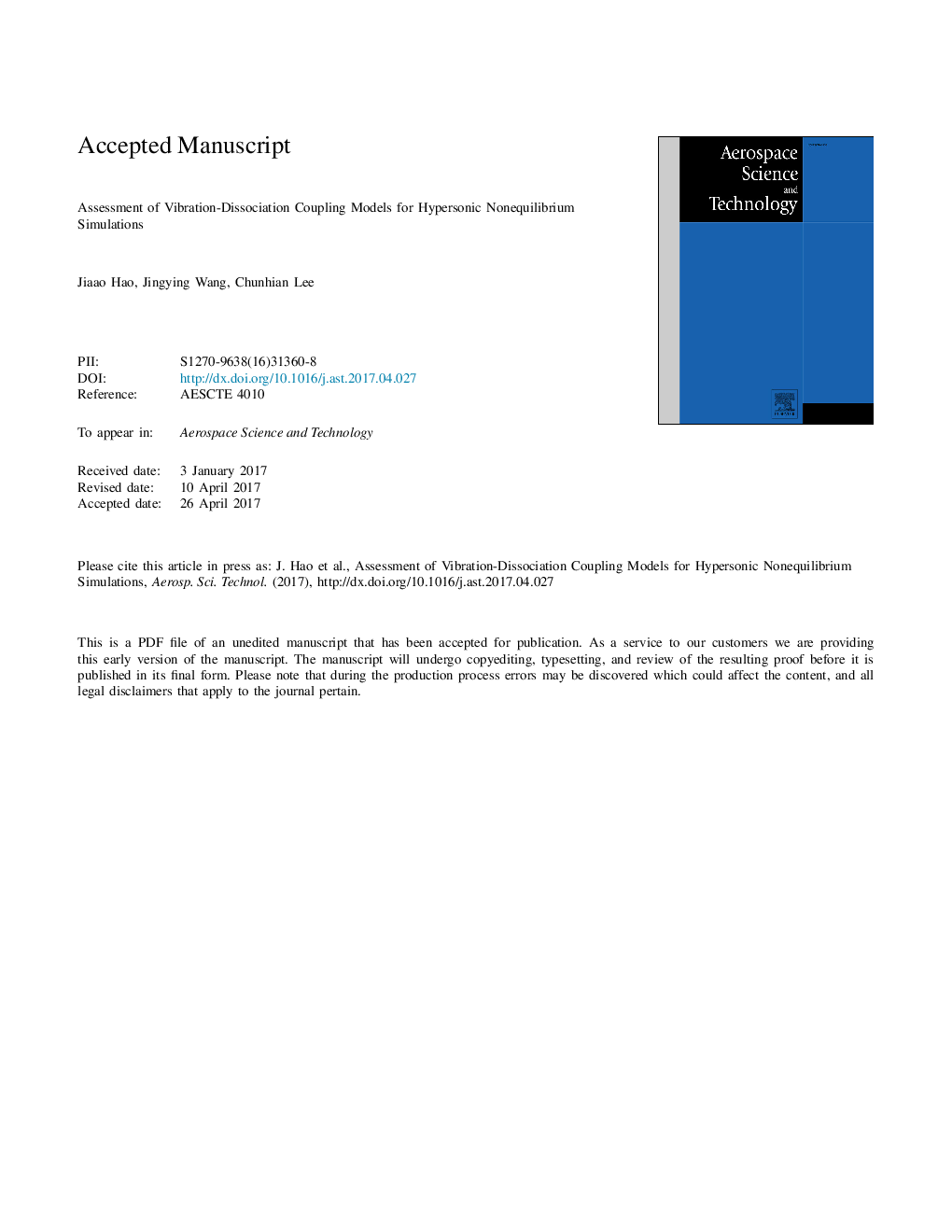| Article ID | Journal | Published Year | Pages | File Type |
|---|---|---|---|---|
| 5472821 | Aerospace Science and Technology | 2017 | 28 Pages |
Abstract
The fidelity of three widely-used two-temperature vibration-dissociation coupling models, including the Park model (1988), the Macheret-Fridman model (1994), and the coupled vibration-dissociation-vibration (CVDV) model (1963), is numerically investigated via a comparison with state-specific results and existing shock tube data for oxygen flows. Under the hypothetical condition where a Boltzmann distribution corresponding to a vibrational temperature is assumed, it is found that the CVDV model with a proper parameter is capable of providing the most accurate results, whereas the Park and Macheret-Fridman models present similar prediction accuracy for which the nonequilibrium dissociation rate coefficients could be as much as three orders of magnitude lower than state-specific values. However, for actual postshock flows with intensive vibrational excitation and dissociation processes, the CVDV model still shows significant discrepancies relative to state-specific results and experimental data, presenting a much lower vibrational temperature and a higher degree of dissociation. The essential cause for the disagreement lies in the existence of non-Boltzmann distributions observed when the incubation period is over and dissociation starts to dominate. Recommendations on further modification of two-temperature vibration-dissociation coupling models are presented.
Related Topics
Physical Sciences and Engineering
Engineering
Aerospace Engineering
Authors
Jiaao Hao, Jingying Wang, Chunhian Lee,
